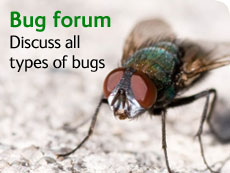Cockchafer or May bug (video)
Join Stuart Hine, Manager of the Natural History Museum’s Identification and Advisory Service, as he introduces the cockchafer beetle and its key characteristics.
The cockchafer or May bug, Melolontha melolontha, is not a true bug but a relatively large beetle.
Adult cockchafers normally appear flying on warm evenings from May to July. They are attracted to artificial light and often come indoors through open windows or even down chimneys. Cockchafers may cause consternation to those who encounter them but are harmless to humans.
Cockchafer grubs, however, are considered a pest. They feed underground on the roots of a wide range of plants and can damage pastures and crops.
Species detail
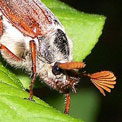
Adult cockchafer showing its short, fan-like feelers © M Mitschack
Melolontha melolontha is the largest UK species of the group of beetles known as chafers.
Identification
The adult insect:
- is about 25-30mm long
- has short feelers on its black head
- has a hairy body
- has non-hairy reddish-brown wing cases (when seen with the naked eye)
Cockchafer grubs can be larger than the adults, growing up to 40mm long. They are C-shaped, have 6 legs, and are white with reddish-brown heads.
-

Biology and behaviour
Cockchafer adults usually only live for about 5-6 weeks. Find out about the lifecycle, behaviour and predators of this species, from egg to adult.
-

Distribution and habitat
In the UK, cockchafers are more commonly found in the south. Learn more about their distribution and the types of habitat they enjoy.
-

Taxonomy
Learn about the taxonomy of the cockchafer beetle and about its lookalike, the summer chafer.
Images
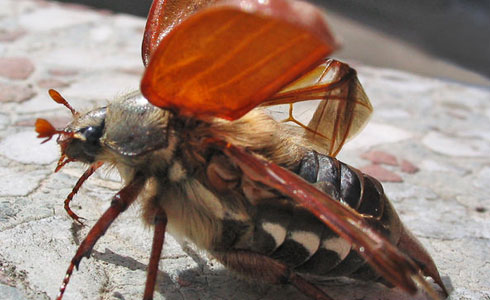
Cockchafer or May bug, Melolontha melolontha, showing its black head, hairy body and reddish-brown wing cases.
© Darkone, Creative Commons Attribution-Share Alike 2.5 Unported license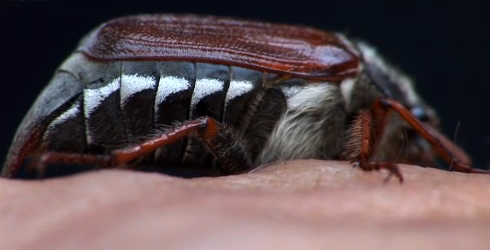
Side of a cockchafer beetle showing the characteristic white triangles
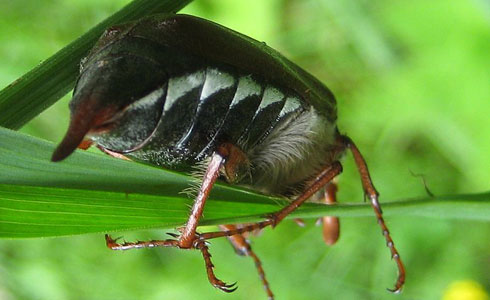
Cockchafer, Melolontha melolontha, in deciduous woodland.
© Aconcagua, Creative Commons Attribution-Share Alike 3.0 Unported license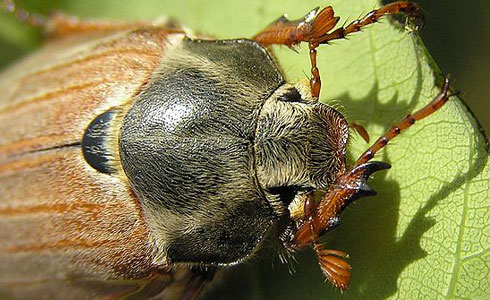
Adult cockchafer beetle resting on a leaf during the day.
© Beentree, Creative Commons Attribution-Share Alike 3.0 Unported license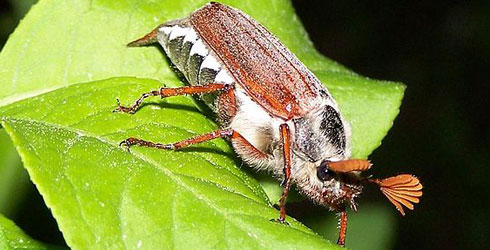
Adult cockchafer beetle showing the short, fan-like feelers on its black head.
© M Mitschack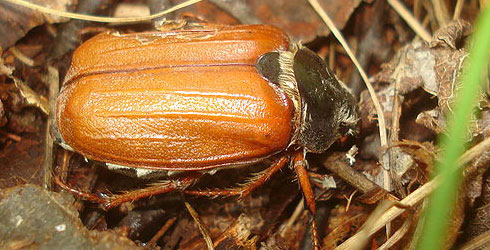
Adult cockchafer beetle resting on leaf litter during the day.
© Sanja, Creative Commons Attribution-Share Alike 3.0 Unported license.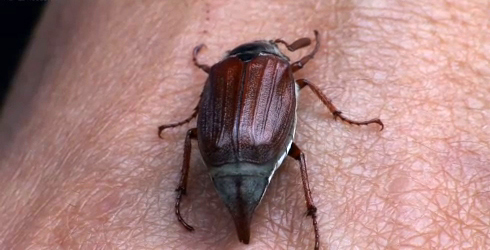
Although the cockchafer abdomen segment (pygidium) is pointed, it is not for stinging. Females use it to lay eggs in the ground.
Toolbox
Reference
Jessop, L (1986) Dung beetles and chafers (Coleoptera: Scarabaeoidea). RES Handbk. Ident. Br. Insects, Vol. 5, Part 11.
